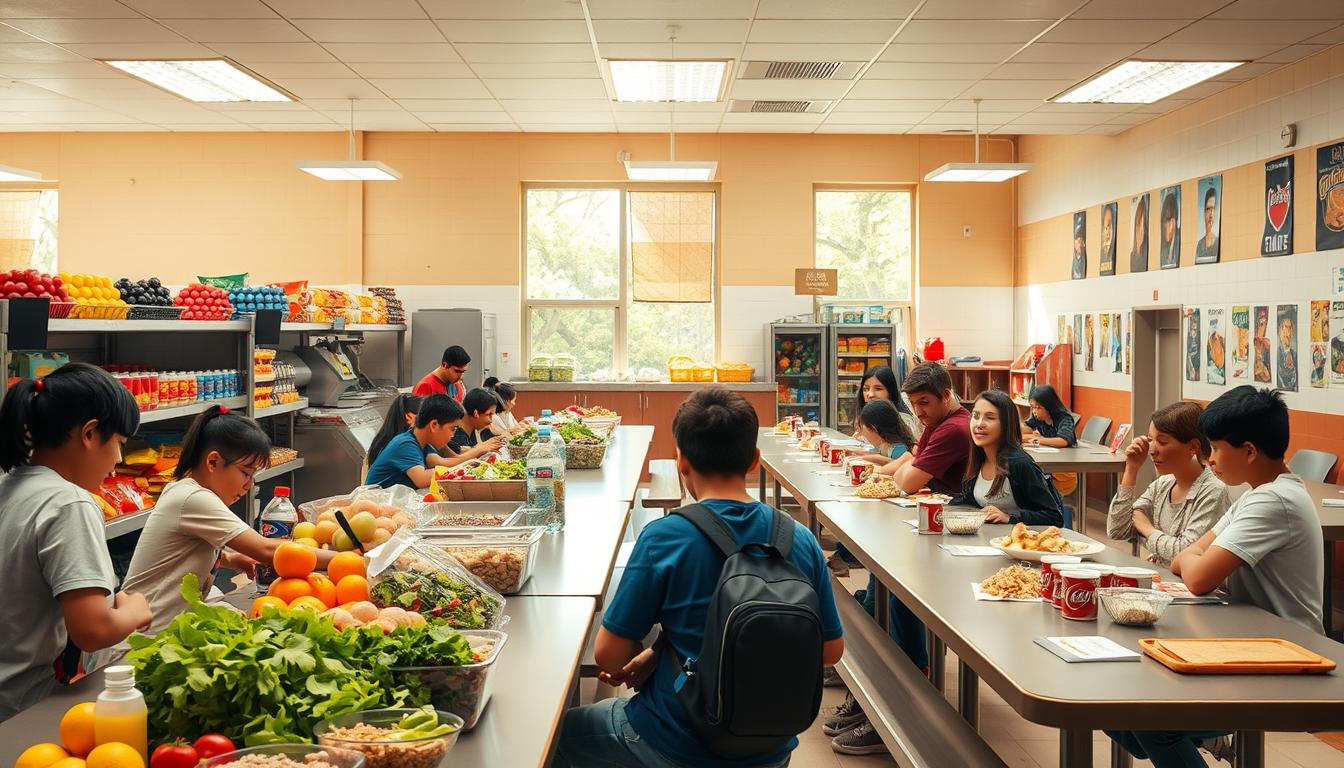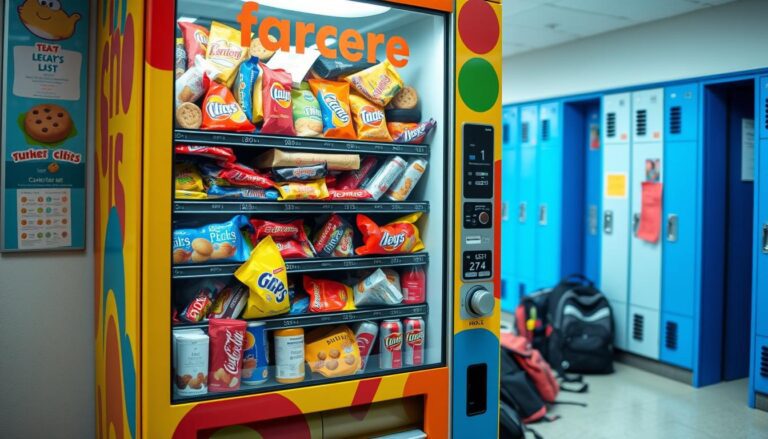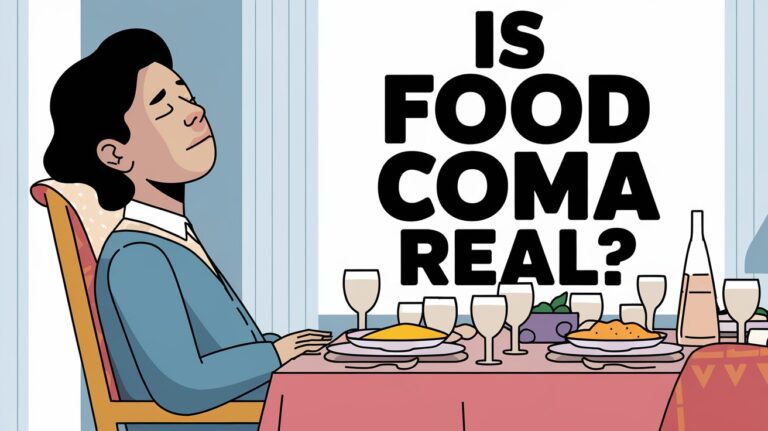Can Banning Junk Food Remove Students’ Freedom Of Choice? A Deep Dive
The debate on banning junk food in schools is intense. From students and parents to teachers and administrations. Some say it’s key to healthy meals and fighting childhood obesity.
For example, here’s a sobering fact: In 2022, nearly 20% of kids were obese, showing the need for action.
On the other hand, there’s worry that such bans limit students’ freedom of choice.
Therefore, this heated debate requires a deeper look into the effects of junk food bans on students’ rights and health. Schools are crucial in teaching kids about healthy eating, as millions struggle with unhealthy habits.
So whether you are pro Junk Food, or anti Junk Food, or somewhere in between… it’s worth exploring all sides of the issue so that you can make a more informed decision. If you read with an open mind, might be surprised how your opinion my change or at least evolve. Or, you might have a better understanding of where someone else might stand, so that it’s easier to find compromises. You know?
Key Takeaways
- The obesity epidemic has seen over 39 million children under five years old classified as overweight.
- About 20% of U.S. children and adolescents struggle with obesity, significantly higher than the average 12.5% in Europe.
- Fast food advertising to children exceeded $5 billion in 2019, influencing their dietary preferences.
- Studies indicate that schools offering junk food often face increased discipline issues.
- Implementing junk food bans in schools has correlated with a decrease in obesity rates.
- Mixed public opinion exists regarding the balance between maintaining choice and promoting health in educational environments.
Introduction to the Debate on Junk Food Bans
The debate on junk food bans in schools is about student nutrition and the obesity epidemic in the U.S. Over one-third of Americans are obese, and two-thirds are overweight. Schools play a big role in shaping food choices, which affects eating habits for life.
Overview of Junk Food Concerns
Studies show junk food is linked to health problems like diabetes, heart disease, and some cancers. It can lead to nutrient deficiencies and increase the risk of osteoporosis. Advocates say schools must act to improve nutrition and fight these trends.
Schools that ban junk food see a big drop in calories. Students eat about 160 calories less each day. This helps fight obesity.
The Role of Schools in Food Choices
Schools are key places for teaching healthy eating. By limiting junk food, schools can guide students’ food choices. This helps kids learn about nutrition and make better food choices.
Since students spend a lot of time in school, what they eat there is very important. It affects their health and well-being.
Balancing Health and Freedom
The challenge is finding a balance between health and freedom. Supporters of junk food bans say rules are needed to protect kids. But critics worry about losing personal freedom and the impact on food businesses.
The debate is ongoing. People are looking for ways to educate students and families about healthy eating without taking away freedom.
Understanding the Concept of Freedom of Choice
Looking into freedom of choice in nutrition shows how personal choices meet outside limits. Schools are key in shaping what students eat, setting rules to keep them healthy. This part talks about what freedom of choice means, how rules affect us, and how school food policies have changed over time.
Definition of Freedom of Choice in Nutrition
Freedom of choice in nutrition means being able to pick what you eat without being bossed around. It’s very important in schools, where students should get to choose their meals. This choice should reflect their likes and where they come from.
Impacts of Restrictions on Decision-Making
When schools limit what you can eat, it can affect how you make choices. These rules might make you feel trapped or push you to ignore them. Finding a balance between healthy food and letting students choose is hard. But, giving them the facts about food can help them make better choices.
Historical Context of Food Choices in Schools
The history of school food policies is key to today’s debates. Rules have changed from almost none to strict ones to fight obesity and promote healthy eating. This history shows how government actions and health campaigns have shaped what students can eat. Knowing this helps us understand the ongoing debate about healthy eating and student choice.
The Argument for Junk Food Bans
It’s important to tackle the health effects of junk food, mainly for students. Bad eating habits in kids can cause serious health problems later in life. Schools have a big role in shaping these habits, affecting both health and learning.
By focusing on healthy food, schools can boost students’ health and grades. This approach can also shape their future success.
Health Implications for Students
Eating junk food often leads to health issues like obesity. This increases the risk of diabetes and heart disease. Kids who eat too much unhealthy food may struggle with focus and hyperactivity at school.
Many schools have relied on cheap, unhealthy foods, often without rules. Michelle Obama’s ‘Let’s Move’ program aimed to change this, pushing for healthier school meals.
Impact on Academic Performance
Eating well is key for doing well in school. Kids need at least five different foods a day to learn and think clearly. A bad diet can make it hard to pay attention and learn.
When schools offer mostly junk food, students are more likely to do poorly. It’s crucial to understand how diet affects learning.
The Role of Healthy Eating in Long-Term Well-Being
Teaching kids to eat healthy early on can prevent many health problems later. Junk food and irregular eating can harm growth and lead to serious health issues. Schools can fight childhood obesity by teaching nutrition and offering healthy food choices.
Removing sugary snacks from vending machines is a step towards better health. Even though healthier meals might cost more upfront, the long-term health benefits are worth it.

Counterarguments: The Case for Student Autonomy
When we talk about banning junk food, we often focus on health benefits. But it’s also key to think about how student autonomy helps in making better food choices. By teaching students to be responsible with their food, they learn to make smart dietary decisions. This helps them develop healthy habits that last a lifetime.
Importance of Teaching Responsibility
Teaching students about food responsibility helps them see how nutrition affects their health. Education is crucial here, as it gives them the tools to pick between good and bad food. Schools can support this by adding strong nutrition education. This helps students think critically about what they eat.
Student Perspectives on Food Choices
Listening to what students think about food choices is very enlightening. Many see choosing food as a way to express themselves and be independent. By giving them a voice, we create a space where they’re more likely to choose healthier options. Surveys show students want to talk about their food preferences, showing the need for schools to offer healthy choices while respecting their freedom.
The Role of Parents and Guardians in Decisions
Parents and guardians play a big role in what kids eat. They influence dietary habits by eating healthily themselves and helping pick meals. By talking about food with their families, students get the support they need to make informed choices.
| Aspect | Importance |
|---|---|
| Education on Nutrition | Empowers students with essential knowledge |
| Student Perspectives | Encourages healthy decision-making through autonomy |
| Parental Influence | Shapes dietary habits and preferences |
Case Studies: Schools That Have Implemented Bans
Looking at schools that banned junk food gives us important insights. Many places in the US have tried different ways to make students healthier. We see how policies changed, how students reacted, and the health benefits that followed.
Overview of Policies in Various Districts
Many schools have worked to improve the food they offer. For example, New York City banned soda vending in 2003. Los Angeles did the same in 2004. These moves were to fight childhood obesity, which affects about one-third of US kids.
Between 2003 and 2005, over 200 laws were proposed to help students eat better. This shows a big effort to make school food healthier.
Student Response and Adaptation
Students have had different reactions to these new rules. At first, some didn’t like the changes. But, as they learned more, many started to prefer healthier choices. This shift is linked to better understanding of food’s impact on health.
When schools offer healthy food and teach about nutrition, students tend to be more open to these changes. This makes the policies more accepted.
Outcomes Observed in Health Metrics
Studies show that banning junk food can really help students’ health. Schools that limit unhealthy foods see less unhealthy eating. This could lead to lower healthcare costs for obesity and diet-related diseases.
By choosing healthier options, students can improve their focus, grades, and overall happiness. This is a big win for schools and students alike.
| District | Year of Ban | Type of Items Banned | Student Adaptation | Health Metrics Improvement |
|---|---|---|---|---|
| New York City Public Schools | 2003 | Soda | Initial resistance, increased acceptance | Reduced soda consumption |
| Los Angeles Unified School District | 2004 | Soda | Adjustment to healthier options | Improved dietary choices |
| Chicago Public Schools | 2012 | High-calorie snacks | Positive adaptation, engaged in healthy eating | Decline in obesity rates among students |
These examples show how banning junk food can change students’ eating habits. Schools that focus on healthy food and education see real improvements in student health.
As we talk more about health policies, it’s key to understand how students react. With obesity and health issues on the rise, studying these cases helps us see the future of school nutrition.
Alternative Approaches to Healthier Food Choices
Schools can make a big difference in teaching kids about healthy eating. By focusing on nutrition, schools help shape students’ eating habits. Programs that engage students in meal planning make them more likely to choose healthy foods.
Education Programs on Nutrition
Nutrition education is key in changing how students eat. These programs teach about food groups, portion sizes, and balanced diets. As students learn, they make better food choices and eat healthier.
Studies show that students who learn about nutrition eat more fruits and veggies. They also eat less junk food.
Strategies for Facilitating Healthy Options
Schools can make healthy foods more appealing. For example, displaying fruits in attractive bowls can increase sales by 103%. Making healthier foods look good can make a big difference.
By separating chocolate milk from other options, schools can offer better choices. This led to a 28% drop in less healthy foods.
Engaging Students in Menu Planning
Getting students involved in meal planning is powerful. It makes them feel responsible and connected to their food choices. When students help pick menu items, they enjoy their meals more.
Research shows kids like to choose their own food. By letting students help plan meals, schools create a culture that values healthy eating.

| Strategy | Description | Impact |
|---|---|---|
| Nutrition Education | Programs teaching the benefits of healthy eating. | Improved dietary behaviors and increased fruit/vegetable intake. |
| Appealing Presentations | Visually attractive meals and arrangements. | Higher sales and consumption of healthier options. |
| Menu Planning Involvement | Students participating in selecting school meals. | Empowerment and acceptance of healthier choices. |
The Role of Government and Policy-Making
Government policies on school nutrition greatly affect students’ health and the public’s well-being. Laws determine what food is available, nutritional standards, and the promotion of healthy choices in schools. This part looks at current laws aimed at better school nutrition, the impact of food industry lobbying, and how these affect public health.
Current Legislation on School Nutrition
In recent years, many efforts have been made to improve school nutrition policies. Some key examples include:
- New York City’s public food procurement standards, requiring healthier food options in schools.
- The Brazilian School Food Programme, which mandates a significant percentage of food purchased from family farmers, promoting both nutrition and sustainability.
- The World Health Organization’s recommendations on healthier eating practices in schools, advocating for national policies aligned with public health objectives.
Impact of Lobbying from Food Industries
Food industry lobbying is key in shaping school nutrition policies. Large corporations try to influence laws to benefit their products, often at the expense of public health. This lobbying can cause:
- Resistance against stricter nutritional guidelines for school meals.
- Promotion of unhealthy food options, undermining efforts aimed at healthier eating.
- Challenges in implementing effective policies due to competing interests.
Trends in Public Health Policy
Recent trends show growing concern about childhood obesity and the need for better school nutrition policies. With alarming statistics on unhealthy eating, policymakers are under pressure to take action. Some trends include:
| Trend | Details |
|---|---|
| Increased Awareness | Awareness campaigns focusing on the health impacts of poor nutrition among students. |
| Evidence-Based Measures | Advocacy for measures based on scientific research to guide food policy decisions. |
| Collaboration with Stakeholders | Engagement with parents, educators, and health professionals to develop comprehensive strategies. |
The Future of Food Choices in Schools
School food policies are changing due to health and nutrition concerns. We’re looking at junk food bans and finding a balance in dietary rules. It’s a big challenge to keep students healthy while giving them choices.
Predictions for Junk Food Policies
In the future, schools will likely ban junk food more. This is because of the link between junk food and childhood obesity. Schools that offer healthier options see better grades and less calorie intake.
Potential for Compromise Solutions
Instead of just banning junk food, we might find better ways. Offering healthy options and letting students choose can teach them to make good choices. This approach helps students learn to eat well without feeling restricted.
Engaging Stakeholders for Balanced Solutions
It’s important to involve everyone in making food policies. Parents, teachers, and the community should work together. They can discuss:
- Teaching kids about nutrition.
- Providing healthy meals and snacks.
- Listening to what students want to eat.
By working together, we can create policies that help students stay healthy and make smart food choices.
| Stakeholder | Role in Food Policy | Potential Contributions |
|---|---|---|
| Parents | Advocates for family health and nutrition | Input on meal options and budgeting for healthier food |
| Educators | Implementers of food policies | Teaching students about nutrition and healthy choices |
| Policymakers | Creators of dietary regulations | Developing policies that balance health and autonomy |
Conclusion: Finding Balance between Choice and Health
As we wrap up our look at junk food bans in schools, let’s review the main points. Almost one-third of kids and teens in the US are overweight or obese. This shows how important it is to think about what they eat at school.
Those who support junk food bans say it helps students do better in school and stay healthy longer. But others believe students should have the right to choose what they eat. They think it’s important for students to learn about making good food choices.
The debate about freedom versus safety in food choices is ongoing. We need to find a way to let students choose what they eat while also making sure they have healthy options. Talking to students, parents, and school leaders can help find solutions that work for everyone.
When we update school nutrition policies, we should aim to balance health and freedom. As we move forward with junk food rules, it’s crucial to have open discussions with everyone involved. These talks help us understand different views and create policies that are best for our students.
For more on a different aspect of this topic, read this article on how vending machines help some schools to fund their budgets.
Most important: Stay respectful and reasonable when you debate this with others. It’s a complex issue, and everyone’s entitled to their opinion!







